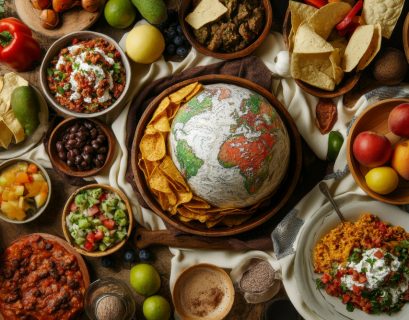Changpeng Zhao’s Latest Market Views — What “CZ” Is Saying About Crypto Forecasts
Changpeng Zhao (often known as “CZ”) remains one of the most influential figures in the...
Arrest at Winnipeg Airport: Large Sum of Cash in Luggage
What Happened Legal Context & Canadian Laws Why This Case Is Interesting / What Makes It Newsworthy Implications & Broader Trends...
Why laughter is considered the universal language of humanity
Laughter has often been described as the universal language of humanity, a form of expression that transcends barriers of culture, geography, and even spoken words. Unlike most forms of communication, it does not rely on vocabulary or grammar; instead, it emerges spontaneously in human interaction …
How changing the environment helps overcome creative stagnation
Creative stagnation is something most people encounter sooner or later. Whether you’re a writer staring at a blank page, an artist caught in repetitive patterns, or a professional struggling to find solutions, the feeling of being stuck can be frustrating and discouraging. What many overlook, howev…
Why travelers notice details invisible to locals
When people step off a plane or train into an unfamiliar place, their senses sharpen in a way that everyday life rarely demands. A traveler notices the uneven cobblestones underfoot, the scent of unfamiliar spices drifting from a market stall, the subtle rhythm of local conversations. These details…
How space exploration reshapes our understanding of everyday life
When most people think about space exploration, they picture astronauts floating in zero gravity, powerful rockets tearing into the sky, or the search for life on distant planets. What often goes unnoticed is the subtle but constant way in which the exploration of space transforms the ordinary rout…
Why body language often speaks louder than words
When people think about communication, they often imagine spoken words carrying the most weight. Yet research consistently shows that nonverbal cues can shape conversations as much, if not more, than what is actually said. A smile, a slouch, or even the way someone folds their arms can send signals…
How the rhythm of the day affects sleep quality
Most people have experienced the frustration of lying awake at night, wondering why sleep feels so elusive despite exhaustion. While we often blame stress, screen time, or caffeine, research suggests that the explanation is deeply connected to something more fundamental: the body’s natural rhythm o…
What unites culinary traditions across different continents
Across the world, cuisines appear strikingly different at first glance—spicy stews in West Africa, delicate sushi in Japan, or hearty casseroles from Europe may seem to share little in common. Yet when we look beyond ingredients and flavors, there are threads that weave them all together. At the he…
How architecture influences our sense of safety in the city
When we think about safety in a city, our minds often jump to statistics, security systems, or the presence of law enforcement. Yet, the design of the built environment plays an equally powerful role in shaping how safe—or unsafe—we feel as we navigate urban spaces. Architecture communicates subtle…















